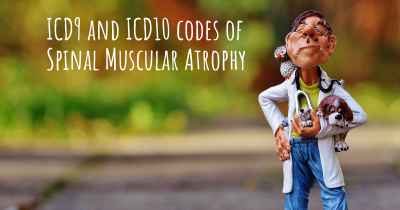What is the life expectancy of someone with Spinal Muscular Atrophy?
Life expectancy of people with Spinal Muscular Atrophy and recent progresses and researches in Spinal Muscular Atrophy

Spinal Muscular Atrophy (SMA) is a genetic disorder that affects the motor neurons in the spinal cord, leading to muscle weakness and atrophy. The life expectancy of individuals with SMA can vary depending on the type and severity of the condition.
Infantile-onset SMA, the most severe form, typically manifests within the first few months of life and can significantly impact life expectancy. Without intervention, many infants with this form of SMA may not survive beyond early childhood. However, with advancements in medical care and treatments such as gene therapy and supportive therapies, the life expectancy for individuals with SMA has improved significantly in recent years.
It is important to note that each case is unique, and prognosis should be discussed with healthcare professionals familiar with the individual's specific condition.
Spinal Muscular Atrophy (SMA) is a genetic disorder that affects the motor neurons in the spinal cord, leading to muscle weakness and atrophy. It is caused by a mutation in the survival motor neuron 1 (SMN1) gene, which is responsible for producing a protein essential for the survival of motor neurons.
The severity of SMA can vary widely, ranging from very severe cases in infancy to milder forms that manifest later in childhood or adulthood. SMA is typically classified into four main types based on the age of onset and the highest level of motor function achieved:
- Type 1 (also known as Werdnig-Hoffmann disease): This is the most severe form of SMA, usually appearing within the first few months of life. Infants with type 1 SMA have significant muscle weakness, difficulty breathing, and feeding problems. The majority of individuals with type 1 SMA do not survive beyond the first few years of life, with respiratory failure being the primary cause of death.
- Type 2: Type 2 SMA typically presents between 6 and 18 months of age. Children with type 2 SMA can sit without support but are unable to walk independently. They may experience respiratory complications and have a shortened life expectancy. However, with advances in medical care and supportive therapies, individuals with type 2 SMA can live into adulthood.
- Type 3: Also known as Kugelberg-Welander disease, type 3 SMA usually becomes apparent in early childhood or adolescence. Individuals with type 3 SMA can walk independently but may experience progressive muscle weakness and mobility limitations over time. Life expectancy for type 3 SMA varies widely, with many individuals living well into adulthood and leading fulfilling lives.
- Type 4: Type 4 SMA is the mildest form and typically manifests in adulthood. Symptoms may include muscle weakness, tremors, and mild motor difficulties. Life expectancy for type 4 SMA is generally normal, and individuals can have a near-normal lifespan.
It is important to note that the life expectancy for individuals with SMA has significantly improved in recent years due to advancements in medical care, supportive therapies, and the development of disease-modifying treatments. The introduction of Spinraza (nusinersen) and Zolgensma (onasemnogene abeparvovec) as treatment options has shown promising results in slowing disease progression and improving motor function in individuals with SMA.
Early diagnosis and intervention, along with comprehensive multidisciplinary care, including physical therapy, respiratory support, and nutritional management, can greatly improve the quality of life and extend the lifespan of individuals with SMA.
Posted Feb 22, 2017 by Daniel 1011
risk are frequent respiratory infections, contracture and scioliosis developments.
Recent only treatment discovery of biogen sprinraza
Posted Feb 23, 2017 by ugyen 1000
Type II science gives you a few more years. I am type II, and with the cuídados required I am 62 years old.
Type III and IV science puts no limits.
There is the Spirabza as the approved treatment, and some more in testing
Posted May 10, 2017 by Carmen 1370
Posted Aug 3, 2017 by Marycielo 2000








